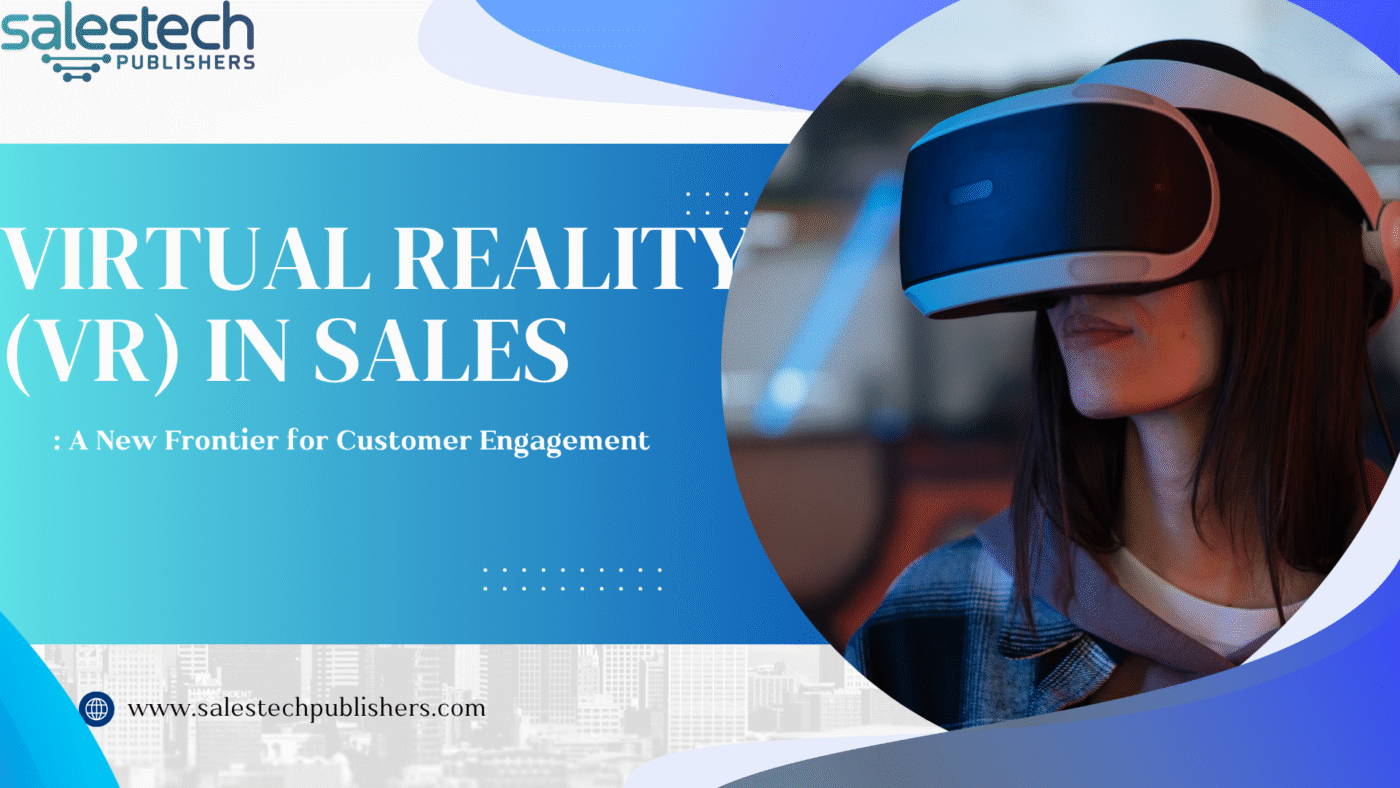Virtual Reality (VR) in Sales: A New Frontier for Customer Engagement

Introduction
Sales strategies in 2025 are evolving rapidly—and Virtual Reality (VR) is emerging as one of the most transformative tools in the field. Gone are the days when sales reps relied solely on PowerPoint decks and phone calls. Now, immersive, interactive VR experiences are driving deeper customer engagement, product understanding, and conversions.
From virtual product demos to 360-degree showrooms, Virtual Reality in sales is truly a new frontier, offering dynamic solutions to traditional selling challenges.
What Is Virtual Reality in Sales?
Virtual Reality (VR) in sales refers to the use of immersive, computer -related environment to link the opportunities during the purchase journey and to link customers during the journey. With VR-headset or online experiences, sales teams can:
- Perform products in 3D
- Provide interactive demo
- Create a virtual meeting or a showroom
- Choosing cases of use of the real world
VR transforms passive presentations into attractive, hands experiences that create trust and shorten the sales cycle.
,,
Why VR Is the Future of Selling
The modern buyer requires more than a brochure – they want experience. VR lets brands actually offer:
- Remove accessibility: Customers can contact products anywhere.
- Memorable interaction: Our demo 2D is more impressive than presentations.
- Efficiency: Changes the requirement of physical prototype or travel.
Since metavors and engrossing technology mature, sales teams that use VR are now using competitive management in customer engagement and discrimination.
,,
Key Use Cases of VR in Sales
It is reported here that the virtual reality of sales already makes a difference in industries:
- Product performance
VR allows customers to interact with almost complex products. For example, a car manufacturer can provide the possibilities of “seating” inside a vehicle and detect its properties without going to a showroom. - Virtual Showroom
Retailers and manufacturers use VR to restore the entire store setup or stores where customers can browse products that they were physically present. - Training and Rollplay
Sales team uses VR for interactive training modules, and realizes sales conversations in the real world and tackles objections in a risk -free environment. - Property tourism
In real estate and architecture, VR is used to offer 360-degree virtual tours of home, buildings and development before construction is completed. - Business shows and events
Instead of expensive setup freight, companies can bring VR Bås to events and let the participants discover the products through the headset.
,,
Benefits of Using VR in Sales Strategy
Using virtual reality in sales provides many benefits:
- Increase in customer commitment
VR creates immersive experiences that keep customers invested, curious and emotionally invested. - High conversion frequency
An informed customer is more likely to buy. Our demos helps the opportunities to imagine the value and make decisions. - Smaller costs
While the first setup of VR can be an investment, the long -term costs on travel, tests and physical performances cut. - Global access
VR allows companies to run individual products for customers all over the world – breaks geographical boundaries. - Detailed analysis
Modern VR equipment provides data on how users interact with experience, and provide sales insight into buyers’ interests and behavior.
,,
. Tools and Platforms Powering VR Sales
Several platforms are making VR more accessible for sales teams in 2025:
- VeeR VR – Platform for creating and sharing immersive content
- Matterport – Great for virtual tours of physical spaces
- Oculus for Business – Facebook’s VR headset platform optimized for enterprise use
- Unity & Unreal Engine – Used to build custom VR sales experiences
- Virbela – Virtual environments for collaborative meetings and sales presentations
These platforms allow businesses of any size to adopt VR without massive tech overhead.
Challenges and ideas
Despite the promise, VR comes with challenges in sales:
- Early investment: VR equipment and material building can be expensive
- Learning curve: Sales team requires training to use VR effectively
- Technology barriers: All customers do not have VR headset or strong internet access
- Material maintenance: Virtual environment must be updated regularly to stay relevant
To remove these obstacles, start small web-based 3D demos before scaling to full VR.
Final Thoughts
Virtual Reality in sales isn’t just a trend—it’s a game-changing innovation that redefines how brands connect with customers. In 2025, businesses that embrace VR will stand out with immersive experiences that engage, educate, and convert buyers like never before.
Whether you’re selling complex machinery, luxury real estate, or digital services, now is the time to explore VR as part of your sales strategy. The future of selling is virtual—are you ready?

